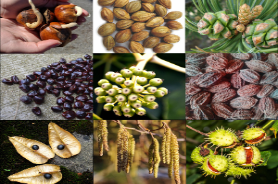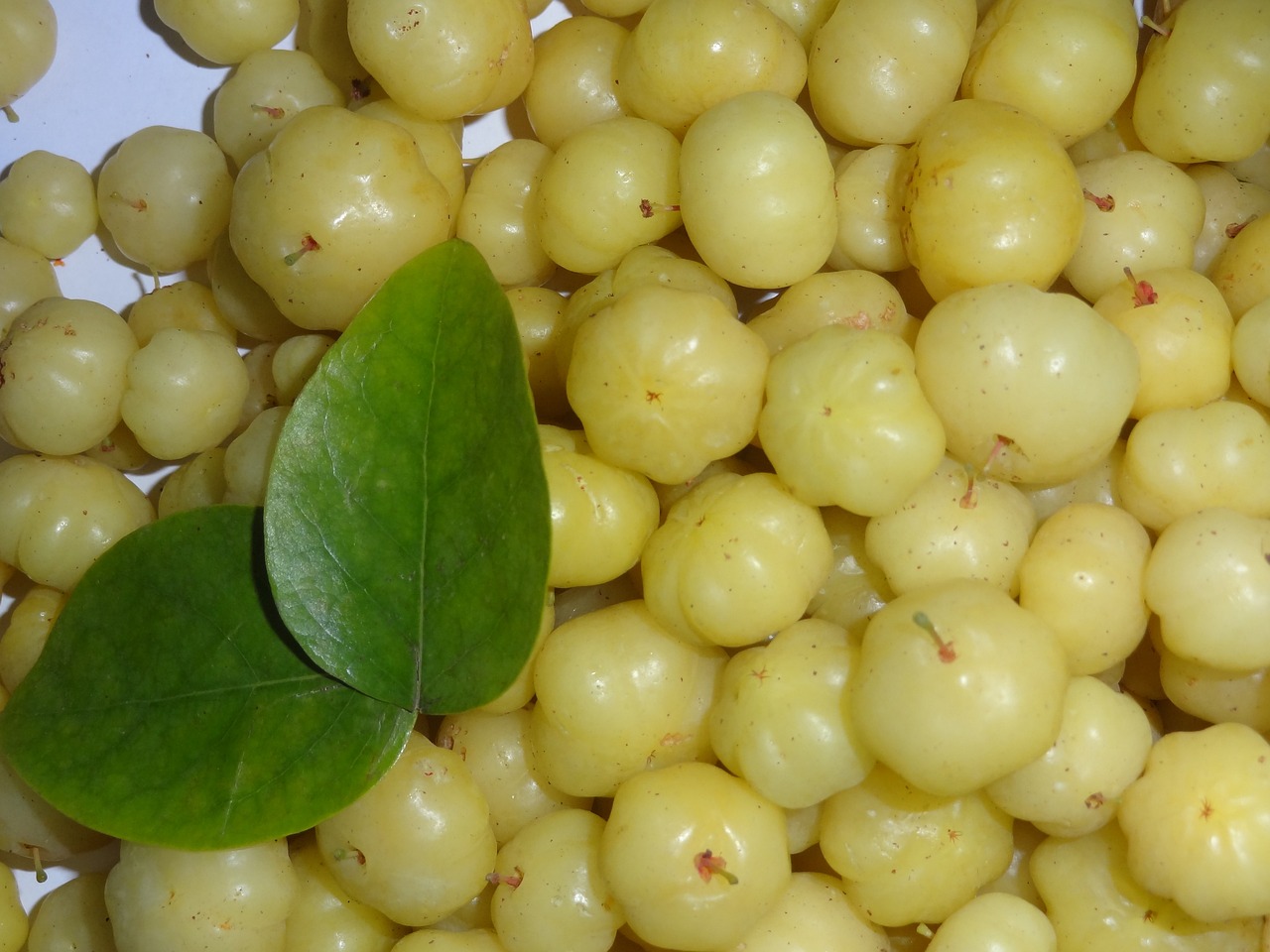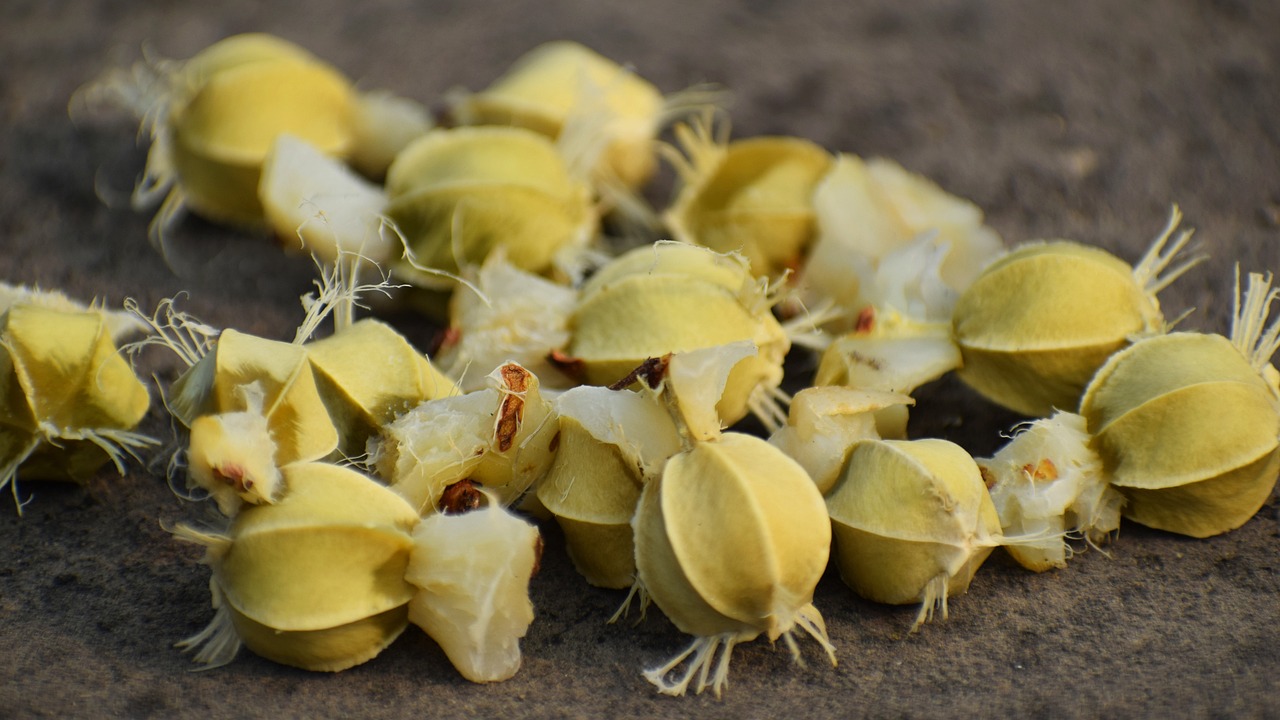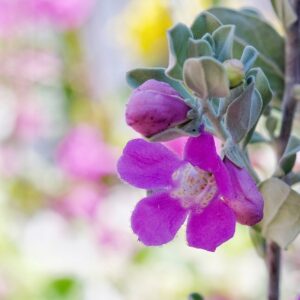- Tree Description:
- Size and Growth: Indian Gooseberry trees can reach a height of 20 to 60 feet (6 to 18 meters) and have a spreading canopy. They have a crooked trunk and a dense, bushy appearance.
- Leaves: The leaves of the Indian Gooseberry tree are simple, oblong, and light green in color. They are arranged alternately on the branches and have a leathery texture.
- Flowers: Indian Gooseberry trees produce small, greenish-yellow flowers with five petals. The flowers are usually inconspicuous and have a pleasant fragrance. They bloom in late winter to early spring.
- Fruit: The fruit of the Indian Gooseberry tree, known as Amla, is round to slightly elongated and measures about 1 to 2 inches (2.5 to 5 centimeters) in diameter. It has a light green color when young and turns yellow-green or light yellow when fully ripe. The fruit has a tart and sour taste.
- Nutritional Content: Indian Gooseberries are known for their exceptional nutritional profile and are considered a powerhouse of vitamins and minerals. They are a rich source of vitamin C, containing significantly higher levels of vitamin C than oranges. Indian Gooseberries also contain vitamin A, vitamin E, vitamin B complex, calcium, iron, phosphorus, and antioxidants such as flavonoids and polyphenols.
- Health Benefits:
- Immune System Support: Indian Gooseberries are renowned for their high vitamin C content, which helps boost the immune system, enhance white blood cell production, and improve overall immune function.
- Antioxidant Properties: The antioxidants present in Indian Gooseberries help neutralize free radicals, reduce oxidative stress, and protect the body against various diseases. These antioxidants also contribute to healthy skin, hair, and nails.
- Digestive Health: Indian Gooseberries have been traditionally used to improve digestion and relieve gastrointestinal issues. They can help alleviate constipation, stimulate bowel movements, and promote healthy digestion.
- Heart Health: The antioxidants and phytochemicals in Indian Gooseberries help reduce cholesterol levels, prevent the oxidation of LDL (bad) cholesterol, and support cardiovascular health. Regular consumption may help reduce the risk of heart disease.
- Blood Sugar Regulation: Indian Gooseberries have been studied for their potential to regulate blood sugar levels. They may improve insulin sensitivity and help manage diabetes by controlling blood glucose levels.
- Anti-inflammatory Properties: The compounds found in Indian Gooseberries possess anti-inflammatory properties, which may help reduce inflammation in the body and alleviate symptoms associated with inflammatory conditions.
- Culinary Uses:
- Fresh Consumption: Indian Gooseberries can be eaten raw, although their tart flavor might be too intense for some. They are often consumed after being pickled, preserved, or processed into other forms.
- Culinary Preparations: Indian Gooseberries are widely used in various culinary preparations. They are used to make jams, jellies, chutneys, and sauces. They can also be added to soups, stews, and curries to add a tangy flavor.
- Herbal Remedies: Indian Gooseberries are a common ingredient in Ayurvedic medicine. They are used to prepare tonics, powders, and herbal remedies for various health conditions.
- Cultivation:
- Climate: Indian Gooseberry trees thrive in tropical and subtropical climates. They can tolerate a wide range of temperatures but prefer a warm climate.
- Soil:














Reviews
There are no reviews yet.